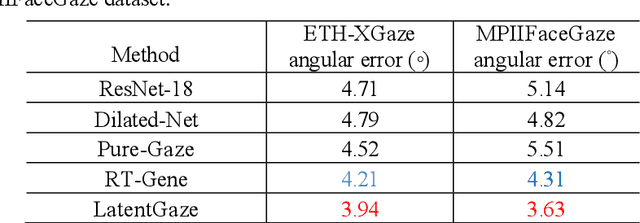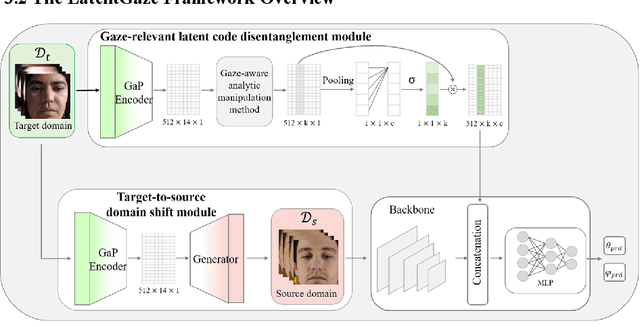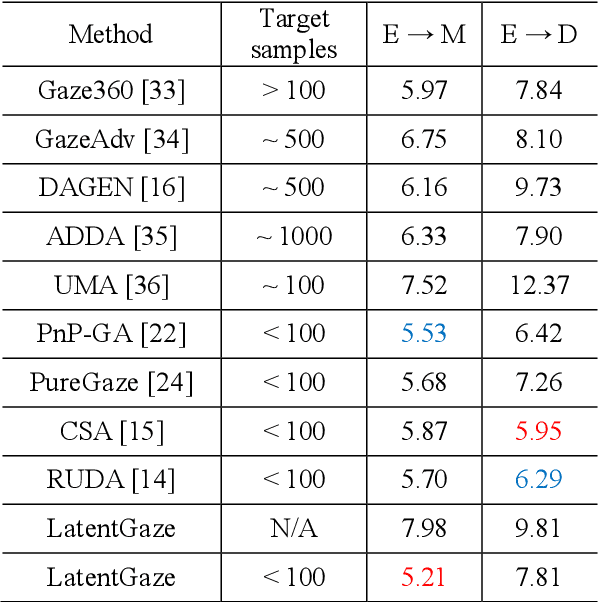Hee Hyeon Kim
LatentGaze: Cross-Domain Gaze Estimation through Gaze-Aware Analytic Latent Code Manipulation
Sep 21, 2022



Abstract:Although recent gaze estimation methods lay great emphasis on attentively extracting gaze-relevant features from facial or eye images, how to define features that include gaze-relevant components has been ambiguous. This obscurity makes the model learn not only gaze-relevant features but also irrelevant ones. In particular, it is fatal for the cross-dataset performance. To overcome this challenging issue, we propose a gaze-aware analytic manipulation method, based on a data-driven approach with generative adversarial network inversion's disentanglement characteristics, to selectively utilize gaze-relevant features in a latent code. Furthermore, by utilizing GAN-based encoder-generator process, we shift the input image from the target domain to the source domain image, which a gaze estimator is sufficiently aware. In addition, we propose gaze distortion loss in the encoder that prevents the distortion of gaze information. The experimental results demonstrate that our method achieves state-of-the-art gaze estimation accuracy in a cross-domain gaze estimation tasks. This code is available at https://github.com/leeisack/LatentGaze/.
HAZE-Net: High-Frequency Attentive Super-Resolved Gaze Estimation in Low-Resolution Face Images
Sep 21, 2022



Abstract:Although gaze estimation methods have been developed with deep learning techniques, there has been no such approach as aim to attain accurate performance in low-resolution face images with a pixel width of 50 pixels or less. To solve a limitation under the challenging low-resolution conditions, we propose a high-frequency attentive super-resolved gaze estimation network, i.e., HAZE-Net. Our network improves the resolution of the input image and enhances the eye features and those boundaries via a proposed super-resolution module based on a high-frequency attention block. In addition, our gaze estimation module utilizes high-frequency components of the eye as well as the global appearance map. We also utilize the structural location information of faces to approximate head pose. The experimental results indicate that the proposed method exhibits robust gaze estimation performance even in low-resolution face images with 28x28 pixels. The source code of this work is available at https://github.com/dbseorms16/HAZE_Net/.
 Add to Chrome
Add to Chrome Add to Firefox
Add to Firefox Add to Edge
Add to Edge